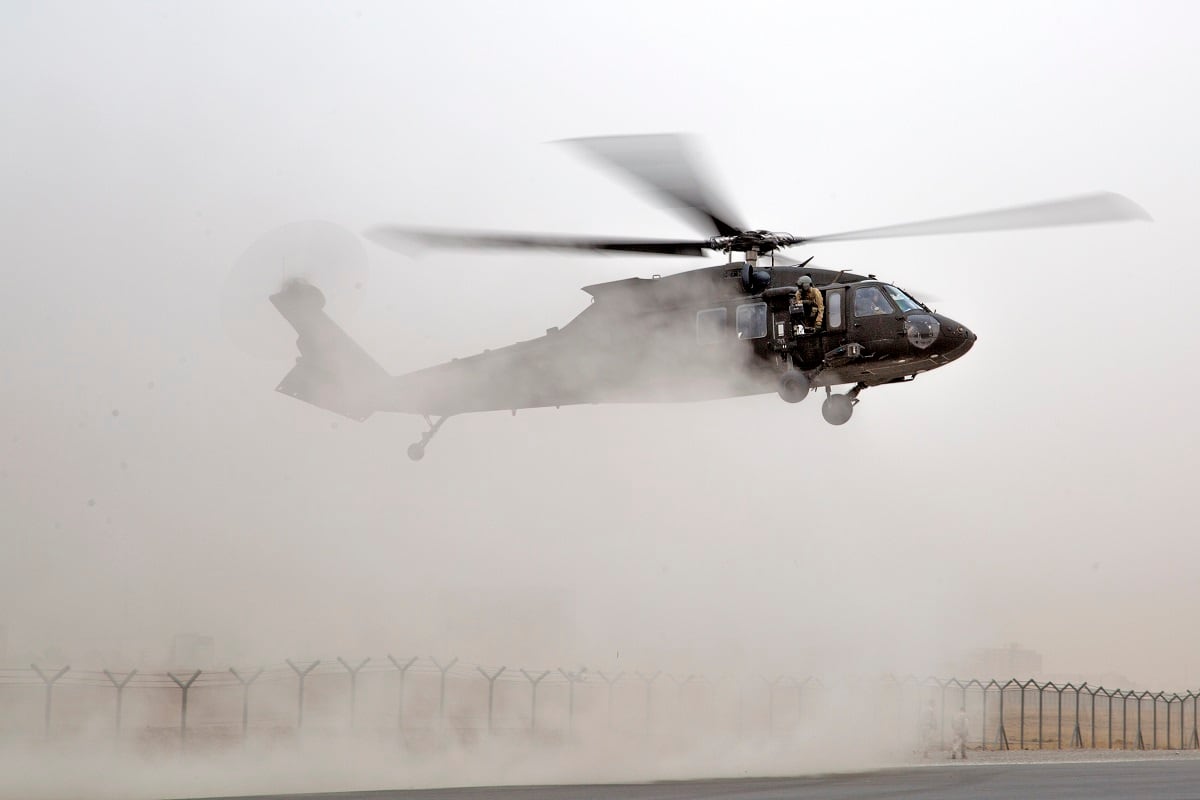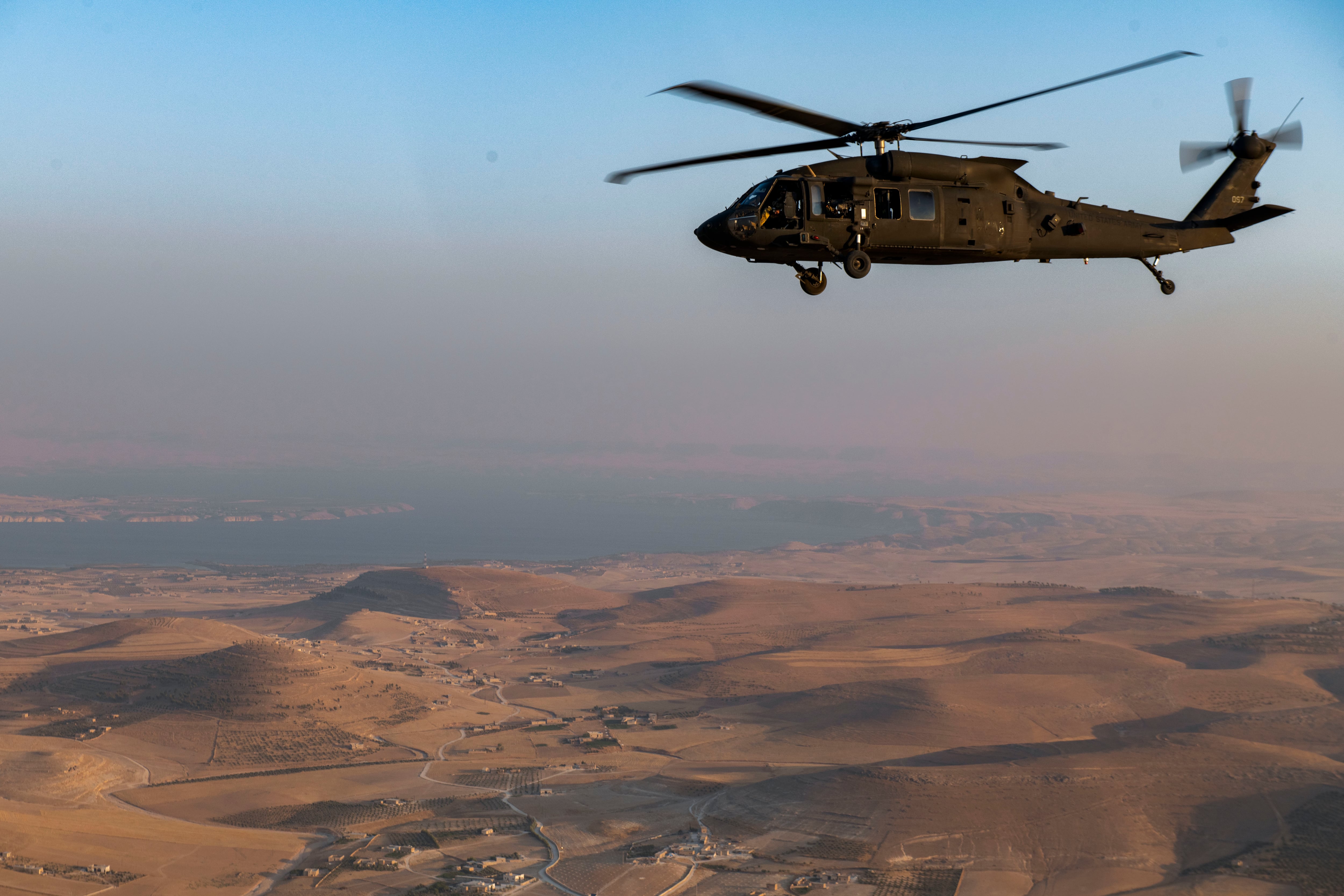Army aviation faces current and future challenges as it adapts itself to both find new pilots while also preparing the next generation of aviators for air combat not seen in generations.
In recent weeks, top Army aviation leaders have said publicly that while the number of pilots in the ranks fills the current aviation needs of the combatant commanders, junior pilot numbers are short and could create a critical gap as senior pilots retire or end their service.
And that’s happening just as a combination of efforts is being re-oriented to gear the aviation branch along with the rest of the Army for large-scale combat operations, leaders said at the AUSA Aviation Hot Topic in September.
Brig. Gen. Michael C. McCurry said at the time that the Army is short nearly 700 junior aviators. Leadership is conducting exit surveys to learn why they’re leaving the force and the Army is working on flight pay improvements, some based on proficiency levels.
RELATED

They’ve also increased seats at training schools and are pushing to better retain senior pilots. Those efforts over the past two years have netted only about another 30 pilots.
And demand isn’t decreasing.
“Today, every active component (Combat Aviation Brigade) is allocated or on mission,” he said. “They’re either on mission, coming back from the mission or training for the mission.”
The same is true for Army Reserve units.
Some of the reasons include under accessing during lean budget years combined with under production at the Army aviation school. Though they do continue to recruit plenty of pilots, McCurry said.
In August, Army Times reported that the service was focusing its retention bonuses on junior pilots with six to 13 years in service and senior warrant officers with between 19 and 22 years.
That’s because the first batch is typically when pilots will either leave the service or head into more administrative positions and the second time range is often the point at which some aviators retire.
And as those gaps are being addressed, new ways of doing Army air warfare are quickly arriving.
To continue current missions, adapt to brand new aircraft and prepare for large-scale combat operations, the Army is pushing its pilots in some of the toughest training challenges, both real and virtual, that they’ve ever faced.
Some of that is going to come from new high-tech trainers that developers hope to keep pace with rapid changes in the existing equipment and future add-ons as that gear evolves. But other parts of training are a return to fundamentals that the gray-haired generals would find familiar – planning, executing and evaluating your own training.
Advances in synthetic training environments, or ways of using virtual battlefields, either entirely immersive or a combination of augmented reality with existing scenarios, are perhaps the only way to effectively drill what’s needed to fight the big fight, said Brig. Gen. Stephen L.A. Michael, deputy commanding general of the Army’s Combined Arms Center.
For the Army National Guard, preparation for large-scale combat may be a major priority, but it can’t be the only one. They still have their state duties and disaster response work to prepare for and execute, said Brig. Gen. Ray Davis, assistant director of aviation and safety for the Guard.
Part of that preparation though will require a re-examination of how the Guard aviation units are dispersed across the country.
Davis said an Army aviation task force is evaluating the challenges to how the service stations its units and looking to decrease dispersion.
With units spread from coast to coast it challenges the ability for them to come together and train, he said.
The development of the Army’s Future Vertical Lift, which will replace the Black Hawk, Chinook, Kiowa and Apache helicopters with at least two new platforms, also opens up training challenges.
Those include both the Future Attack Reconnaissance Aircraft and the Future Long-Range Assault Aircraft.
Todd South has written about crime, courts, government and the military for multiple publications since 2004 and was named a 2014 Pulitzer finalist for a co-written project on witness intimidation. Todd is a Marine veteran of the Iraq War.




